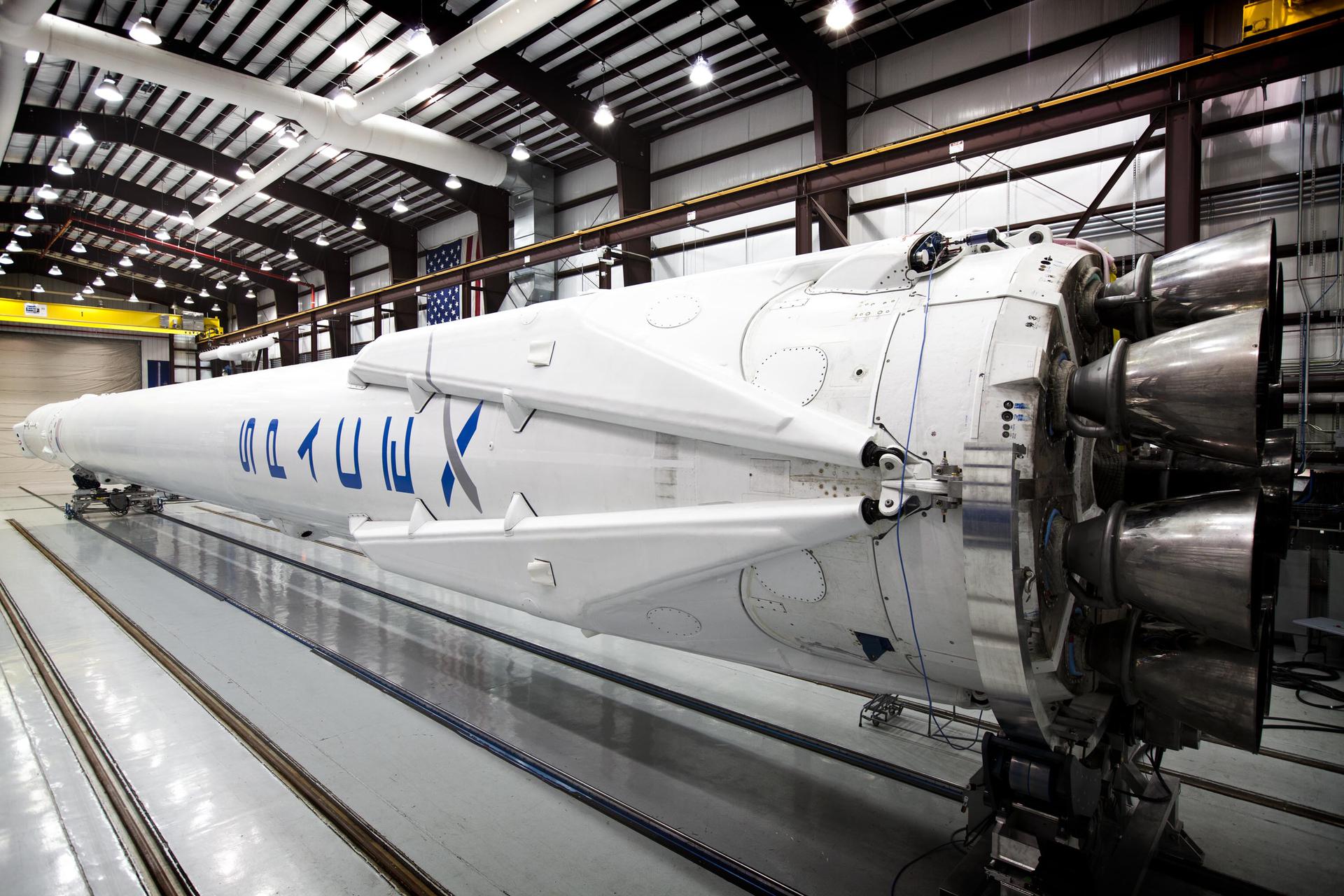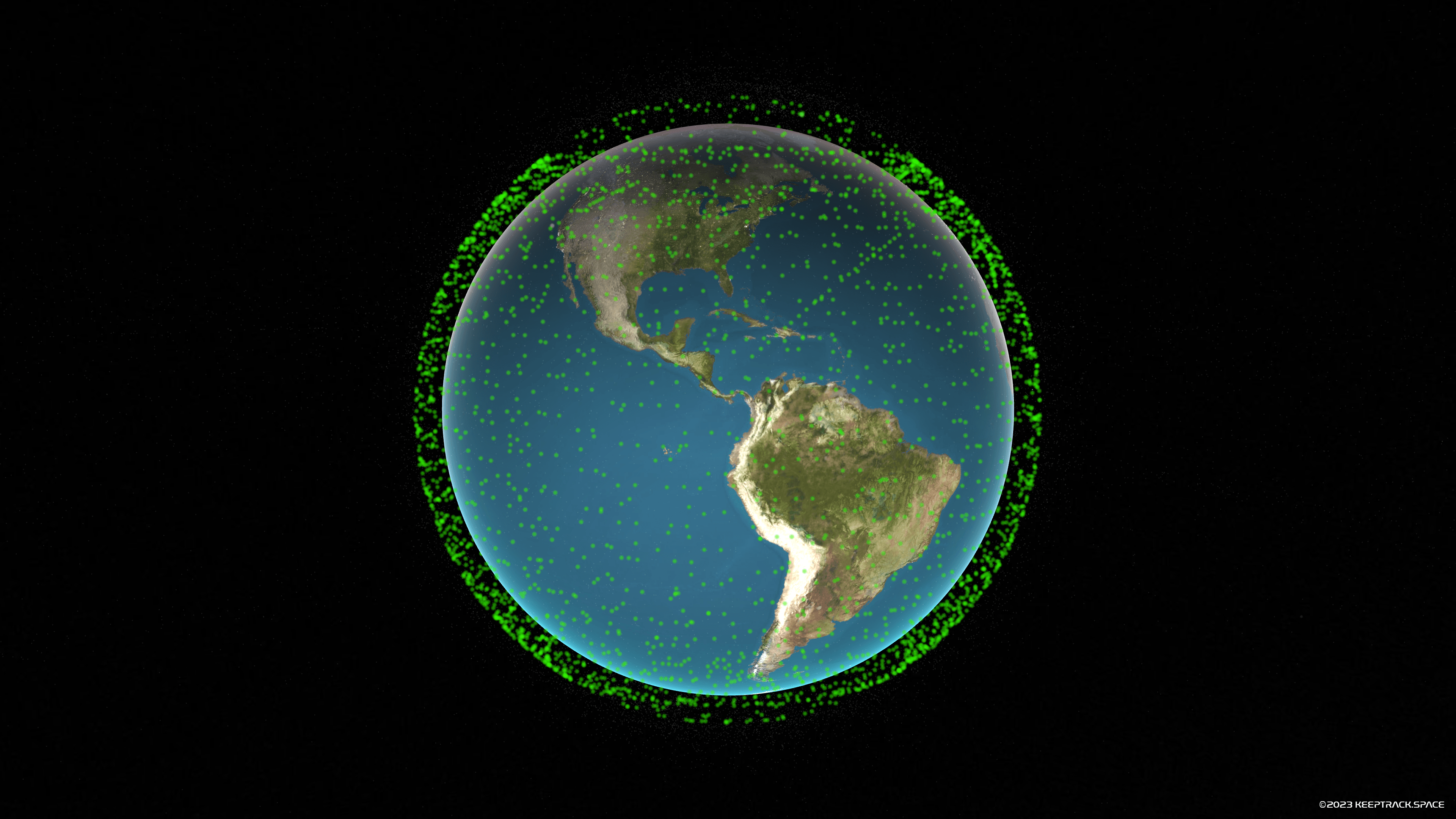· space brief · 5 min read
Space Brief 21 Oct 2024
Today's Space Brief covers SpaceX's recent launch for OneWeb, advances in remote-control robots for lunar missions, the power loss of Intelsat 33e, and developments in inflatable space habitats.

📄Top Stories
SpaceX successfully launched additional satellites for OneWeb’s broadband network, further bolstering the constellation’s resilience. A new approach with teleoperated rovers shows potential for remote lunar exploration, offering a workaround for signal delays. Intelsat 33e has experienced a power failure, affecting service in multiple regions. Meanwhile, inflatable habitats offer a promising future for off-world living spaces.
📰Detailed Coverage
Teleoperated Rovers Enhancing Lunar Missions
Research from the University of Bristol has highlighted the potential of teleoperated robots for lunar and Martian surface exploration. These robots can be controlled from Earth, mitigating signal delays by using advanced simulations to mimic lunar conditions including haptic feedback. The system could also prepare astronauts for upcoming missions, functioning as a crucial aspect of ESA’s Moonlight project for future lunar rovers.
This innovation correlates directly with satellite tracking as signals would likely be relayed through satellites orbiting the Moon, showcasing potential uses for our web app in tracking and monitoring these missions.
Read the full story: Space.com
Inflatable Space Habitats
Inflatable structures, such as those developed by Max Space and Sierra Space, are paving the way for future space habitats on the Moon and Mars. These habitats provide significant volume with less mass, ideal for confined spacecraft payloads. Recently, Lockheed Martin and other companies have been testing various expandable designs to ensure durability and practicality in space environments.
The evolution of such innovations indicates a shift toward infrastructure that can be easily transported and deployed in space, tying in closely with satellite support for navigation and operations.
Read the full story: Space.com
Intelsat 33e Power Failure
Intelsat 33e, a communications satellite, has experienced a power failure that has led to disruptions across several regions including Europe, Africa, and parts of the Asia Pacific. This incident underscores the critical nature of satellite health monitoring and the impact of orbital infrastructure failures on global communications services.
Our satellite tracking capabilities can assist in monitoring the operational status and trajectory of similar satellites, enhancing awareness and preventive measures.
Read the full story: SpaceNews
SpaceX’s Milestone Launch for OneWeb
SpaceX marked its 100th orbital flight of 2024 by launching 20 spare satellites for OneWeb’s constellation. This mission supports Eutelsat’s low Earth orbit network’s resiliency and showcases SpaceX’s continued prowess in satellite deployment with their Falcon 9 rocket system, which enhances broadband coverage worldwide.
Follow these missions closely via our app to see how such launches impact the satellite constellations and communication networks in real-time.
Read the full story: SpaceNews
New Developments in Space Policy
The draft for the European Union’s new Space Law faces further delays, sparking discussions over its potential impact. The proposal could shape regulations affecting satellite operations and funding across Europe. This development signals important changes for satellite operators and service providers, underlining the necessity for adaptable satellite technologies and tracking capabilities.
Read the full story: SpaceNews
Artemis 2 Mission Preparations
NASA’s Artemis 2 mission, scheduled for next September, faces potential delays due to ground system refurbishments needed for launch readiness. These challenges highlight the intricate coordination required for successful space exploration missions. Monitoring such mission timelines can provide valuable insights for satellite launches and orchestrations.
Read the full story: SpaceNews
🛰️Satellite Spotlight
- Satellite Name: IRS 1D
- NORAD ID: 24971
- Launch Date: 1997-09-29
- Mission: Earth observation and resource management
- Orbit: Inclination: 98.7795°, Period: 100.35 minutes, Eccentricity: not specified
- Operator: ISRO (Indian Space Research Organisation)
- Fun Fact: IRS 1D was part of an early series of Indian remote sensing satellites that helped in various applications like agriculture, environmental monitoring, and disaster management.
Current TLE Data:
1 24971U 97057A 24290.48247930 .00000937 00000-0 34008-3 0 99992
2 24971 98.7795 260.8249 0051657 219.6302 140.1103 14.34976203415298
Track this satellite in real-time on our web app: Track IRS 1D
🚀 Upcoming Space Launches
October 21
- SpaceX Falcon 9:
- Starlink Group 6-61 from Cape Canaveral SFS, FL, USA (22:40 UTC) A batch of 23 satellites for the Starlink mega-constellation - SpaceX’s project for space-based Internet communication system.
October 22
- China Aerospace Science and Technology Corporation Long March 6:
- Unknown Payload from Taiyuan Satellite Launch Center, People’s Republic of China (00:03 UTC)
October 23
China Aerospace Science and Technology Corporation Long March 2C:
- Unknown Payload from Xichang Satellite Launch Center, People’s Republic of China (00:59 UTC)
Blue Origin New Shepard:
- NS-27 from West Texas Suborbital Launch Site/ Corn Ranch, Van Horn, TX, USA (15:00 UTC) Twenty-seventh flight of New Shepard, flying unmanned as a test for the newest booster.
October 24
- SpaceX Falcon 9:
- NROL-167 from Vandenberg SFB, CA, USA (17:15 UTC) Suspected fourth batch of satellites for a reconnaissance satellite constellation built by SpaceX and Northrop Grumman for the National Reconnaissance Office to provide imaging and other reconnaissance capabilities.
October 26
- Mitsubishi Heavy Industries H3-22:
- DSN 3 (Kirameki 3) from Tanegashima Space Center, Japan (06:44 UTC) A geostationary communications satellite for military communications by the Japanese military.
October 31
Galactic Energy Ceres-1:
- Unknown Payload from Jiuquan Satellite Launch Center, People’s Republic of China (00:00 UTC)
Rocket Lab Electron:
- Changes In Latitudes, Changes In Attitudes from Rocket Lab Launch Complex 1, Mahia Peninsula, New Zealand (00:00 UTC) Launch of a yet to be identified satellite to SSO for an undisclosed customer. The customer is suspected to be Low Earth Orbit communication satellite constellation operator E-Space.
SpaceX Falcon 9:
- Starlink Group 11-2 from Vandenberg SFB, CA, USA (00:00 UTC) A batch of satellites for the Starlink mega-constellation - SpaceX’s project for space-based Internet communication system.
Firefly Aerospace Firefly Alpha:
- FLTA006 (Lockheed Martin Demo 1) from Vandenberg SFB, CA, USA (00:00 UTC) First of up to 25 launches of Low Earth Orbit technology demonstration satellites to be built and operated by Lockheed Martin. Launch operation will also again demonstrate responsive space pre-launch operation capabilities.
Note: Launch dates and times are subject to change due to technical or weather considerations.





